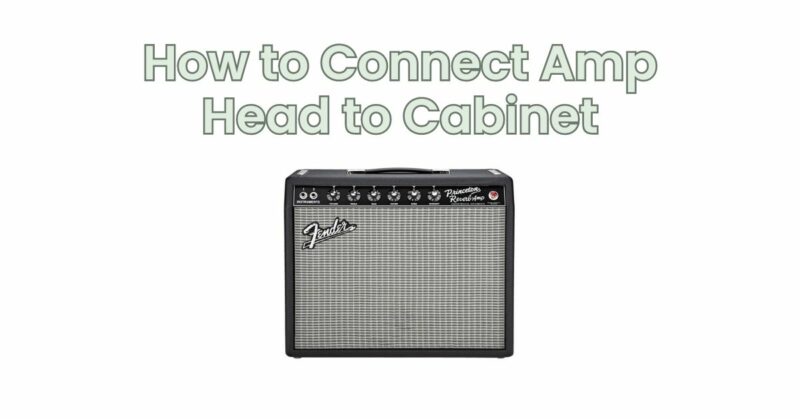For guitarists seeking maximum tonal flexibility and power, connecting an amplifier head to a speaker cabinet is a popular choice. This configuration, commonly known as a “head and cab” setup, allows you to customize your sound by combining different amp heads and speaker cabinets. In this article, we will guide you through the process of properly connecting an amp head to a speaker cabinet, ensuring optimal sound projection and avoiding any potential issues.
Step 1: Gather the Necessary Equipment Before you begin, make sure you have the following equipment ready:
- Amplifier Head: Choose an amplifier head that matches your tonal preferences, power requirements, and playing style.
- Speaker Cabinet: Select a speaker cabinet that complements your amp head and provides the desired tonal characteristics and power handling capabilities.
- Speaker Cable: Use a high-quality speaker cable to connect the amp head to the speaker cabinet. Avoid using instrument cables, as they are not designed to handle the power required for speaker connections.
Step 2: Check the Impedance Matching Ensure that the impedance of the speaker cabinet matches the impedance rating specified on the back of the amplifier head. The impedance rating is usually given in ohms (Ω). Mismatching impedance can result in poor sound quality, damage to the amplifier, or even a complete failure of the equipment. Always follow the manufacturer’s guidelines regarding impedance matching.
Step 3: Power Off and Unplug Before making any connections, turn off the amplifier head and unplug it from the power source. This precaution ensures safety during the setup process.
Step 4: Identify the Speaker Outputs Locate the speaker output jacks on the back panel of the amplifier head. These are usually labeled “Speaker Out” or “Speaker Output.” You may find multiple outputs labeled for different impedance options. Choose the appropriate output based on the impedance of your speaker cabinet.
Step 5: Connect the Speaker Cable Take one end of the speaker cable and plug it into the speaker output jack on the amplifier head. Ensure a secure connection by firmly pushing the connector into the jack.
Step 6: Connect the Other End to the Speaker Cabinet Take the other end of the speaker cable and connect it to the input jack on the speaker cabinet. Again, ensure a secure connection by firmly pushing the connector into the jack.
Step 7: Double-Check Connections Verify that both ends of the speaker cable are securely connected to the amplifier head and the speaker cabinet. Loose connections can cause signal loss, distortion, or damage to the equipment.
Step 8: Power On and Test Once all the connections are secure, power on the amplifier head and test the sound output. Gradually increase the volume to ensure that the signal is being properly transmitted to the speaker cabinet. Monitor for any unusual noises, pops, or distortion, and adjust the settings as needed.
Important Tips:
- Use Speaker Cables: As mentioned earlier, always use dedicated speaker cables when connecting an amp head to a speaker cabinet. These cables are designed to handle the high-power signals required for speaker connections.
- Avoid Hot Plugging: Never connect or disconnect the speaker cable while the amplifier head is powered on. Doing so can cause a loud popping sound and potentially damage the amplifier or speakers.
- Secure Cable Routing: Ensure that the speaker cable is routed safely and kept away from any sharp edges or moving parts that could cause damage to the cable or connections.
Conclusion: Connecting an amplifier head to a speaker cabinet is a straightforward process that requires attention to detail and adherence to safety precautions. By following the steps outlined above, you can properly connect your amp head to the speaker cabinet, ensuring optimal sound projection and maintaining the integrity of your equipment. Remember to check impedance matching, use dedicated speaker cables, and always power off the equipment before making any connections. With a solid connection in place, you can unleash the full potential of your amp head and speaker cabinet, immersing yourself in the powerful and dynamic world of guitar amplification.

